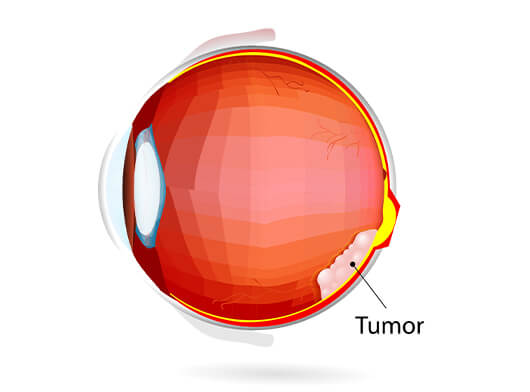- Treatment
- Radiation
A variety of treatment options are available for children with retinoblastoma, including several globe and vision-sparing therapies. First-line therapeutic options include systemic chemotherapy, ophthalmic artery chemosurgery (OAC), cryotherapy, laser photoablation, radioactive plaques (I-125 brachytherapy), and enucleation.
External beam radiation therapy (EBRT) is no longer considered first-line primary therapy and is rarely used, except in certain salvage situations.
-
Low-Risk Disease (Group A & B): Most patients with unilateral or bilateral small extrafoveal tumours without subretinal or vitreous seeding can be managed with focal techniques, including cryotherapy or laser photocoagulation or (less commonly) plaque radiation therapy.
Moderate–High Risk (Group C & D): With Tumours, treatment is tailored according to the tumour burden with the aim of globe salvage if possible:- Ophthalmic artery chemosurgery: A catheter is inserted into a blood vessel near the groin and then steered through the body up to the eye, where chemo is directly delivered.
- Systemic intravenous Chemotherapy: The drug is injected into a blood vessel and is pumped throughout the body.
-
Intravitreal chemotherapy: Chemotherapy is injected directly into the eye
Chemotherapy kills cancer cells or stops them from dividing. For retinoblastoma, chemotherapy may be used to shrink the tumour, making treatments like laser or cryotherapy more effective.
Very High Risk (Group E): Anatomically or functionally destroyed eyes are treated with enucleation. Following enucleation, adjuvant systemic chemotherapy is provided (often combined with focal radiotherapy to the orbit) if there is a positive optic nerve margin or trans-scleral/extrascleral extension.
Enucleation surgery – Removal of the globe –An orbital implant(typically hydroxyapatite or porous polyethylene or nonporous silicone implants) is placed at the time of enucleation. After the overlying conjunctiva has healed (approximately six weeks), a prosthesis can be fitted by an ocularist.


